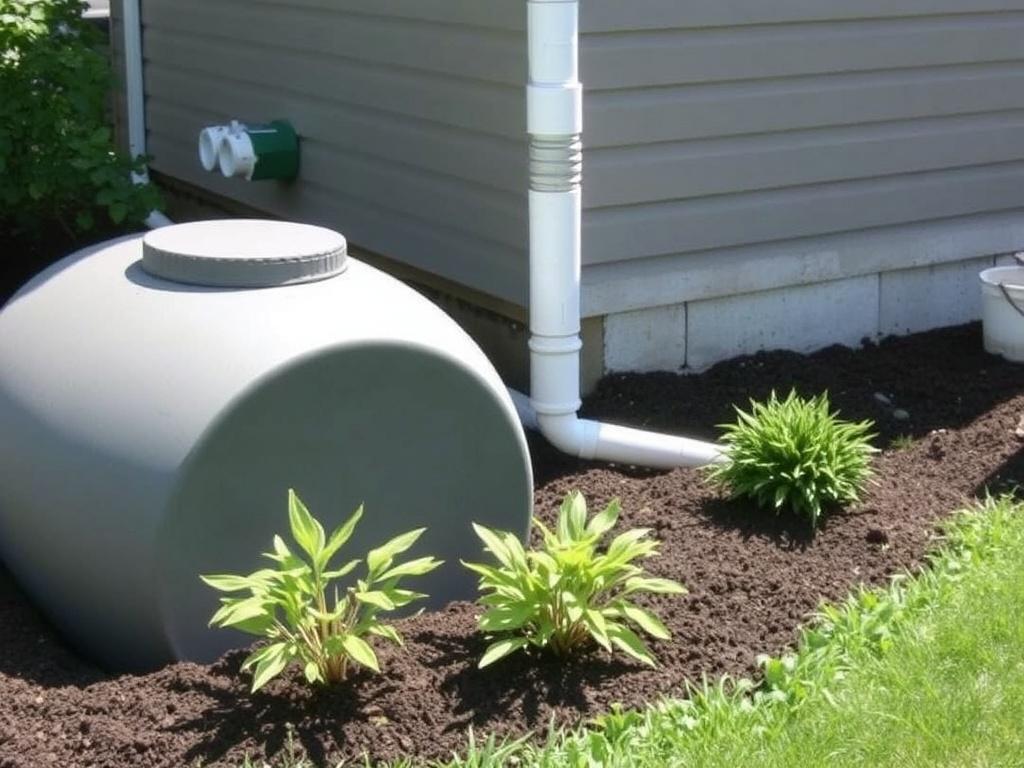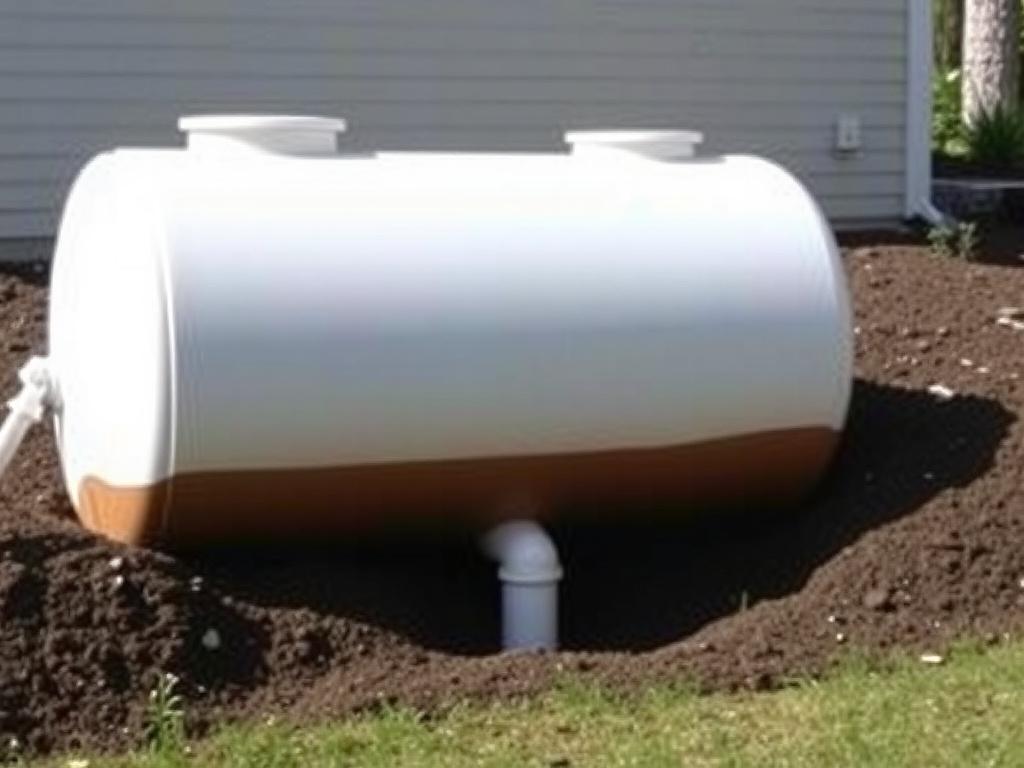Septic tanks are essential components of many homes, especially those in rural or suburban areas without access to municipal sewer systems. They play a vital role in managing household wastewater safely and efficiently. However, like any system buried beneath your property, septic tanks can develop problems over time — with leaking being one of the most concerning issues. But how can you tell if your septic tank is leaking? Recognizing the signs early can save you money, prevent environmental damage, and maintain the health of your household. In this article, we’ll explore everything you need to know about identifying septic tank leaks, understanding their causes, and taking proper action to resolve them.
- What Is a Septic Tank and Why Is It Important?
- Common Causes of Septic Tank Leaks
- Signs to Look For: How to Tell If Your Septic Tank Is Leaking
- 1. Unpleasant Odors Near the Tank or Drain Field
- 2. Wet or Soggy Ground Above the Septic Tank
- 3. Lush, Green Grass Patches
- 4. Slow Drains and Backups Inside the Home
- 5. Gurgling Sounds in Plumbing
- 6. Standing Water or Puddles Near the Septic Area
- 7. Presence of Nitrate or Bacteria in Well Water
- How to Confirm a Septic Tank Leak
- What To Do If You Suspect Your Septic Tank Is Leaking
- Preventing Septic Tank Leaks
- Cost Considerations: Repairing or Replacing a Leaking Septic Tank
- Environmental and Health Risks of a Leaking Septic Tank
- DIY Tips to Monitor Your Septic System Between Professional Inspections
- Conclusion
What Is a Septic Tank and Why Is It Important?

Before diving into the specifics of leaks, it’s crucial to understand what a septic tank does and why it matters. A septic tank is an underground chamber typically made of concrete, fiberglass, or plastic. It is designed to hold the wastewater from your home, allowing solids to settle at the bottom while oils and lighter waste float to the top. The clarified water then flows to a drain field or leach field for further natural treatment.
This system is vital as it keeps wastewater away from the environment and your living space, treating it in a way that protects public health. Unfortunately, due to its underground placement, any problems like leaks or cracks in the septic tank can go unnoticed for a long time, which is why knowing the typical warning signs is so important.
Common Causes of Septic Tank Leaks
To fully grasp how to tell if your septic tank is leaking, it’s helpful to understand what typically causes leaks. Addressing the root cause early can prevent serious damage.
- Age and Wear: Most septic tanks last about 20–40 years, depending on the material and maintenance. Older tanks made of concrete can crack over time due to soil pressure or corrosion.
- Poor Installation: If the tank was not installed correctly on a stable base or with adequate sealing, it might develop leaks sooner than expected.
- Excessive Water Use: Overloading the septic system with too much water can cause pressure and disturb the settling solids, potentially leading to leaks or damage.
- Tree Roots: Tree roots naturally seek moisture and may infiltrate the tank or pipes, causing cracks or blockages.
- Heavy Machinery: Driving heavy equipment or vehicles over the septic tank area can damage the lid or tank walls.
Recognizing these causes can guide you toward preventive steps and help you understand why your system may be leaking.
Signs to Look For: How to Tell If Your Septic Tank Is Leaking
Identifying a leaking septic tank involves observing both obvious and subtle signs around your home and yard. Here are the most common indicators:
1. Unpleasant Odors Near the Tank or Drain Field
One of the first signs homeowners notice when their septic tank is leaking is a persistent foul smell. If you detect a sewage or sulfur-like odor around the septic tank access point or in your yard where the drain field is located, it could be a leak allowing wastewater to escape and rise to the surface.
2. Wet or Soggy Ground Above the Septic Tank
A leaking septic tank often causes the soil above it to become saturated or wet, even during dry weather. If an area in your yard remains soggy or marshy, particularly if it persists over time, it’s a strong signal of a leak.
3. Lush, Green Grass Patches
When wastewater leaks into the soil, it can act like fertilizer, causing unusually green or thick grass growth directly above the tank or drain field. While this may seem positive, it’s actually a warning sign that raw sewage may be escaping.
4. Slow Drains and Backups Inside the Home
If your sinks, toilets, or showers drain slower than normal or if you experience frequent backups, it may imply that the septic tank is not handling wastewater properly due to internal damage or leaks.
5. Gurgling Sounds in Plumbing
Strange gurgling noises in your plumbing system can also be a symptom of a failing septic tank. These sounds may signal trapped gases or improper flow caused by leaks or blockages.
6. Standing Water or Puddles Near the Septic Area
Any standing water puddles on or near the septic tank or leach field that can’t be explained by rainfall should be investigated. This water could be leaking wastewater escaping from your tank.
7. Presence of Nitrate or Bacteria in Well Water
For homes using well water, the contamination of well water with nitrates or harmful bacteria such as coliforms can indicate septic failure and leaks are contaminating groundwater.
How to Confirm a Septic Tank Leak

Observing warning signs is essential, but confirming a septic tank leak often requires additional tools and professional help.
| Method | Description | When to Use |
|---|---|---|
| Visual Soil Inspection | Inspect soil around the septic tank and drain field for wetness, sogginess, or unusual vegetation. | First step for homeowners to detect possible leaks. |
| Smoke Testing | Technicians pump smoke into the septic lines to detect cracks or leaks where smoke escapes. | Effective for finding pipe leaks and cracks in septic tanks. |
| Water Level Measurement | Measuring the liquid level inside the septic tank to see if it drops unexpectedly indicating leaks. | Used by professionals during tank inspections. |
| Video Camera Inspection | Using a waterproof camera on flexible cable to inspect the inside of pipes and tank. | To identify fissures, cracks, or physical damage inside the system. |
| Soil Testing | Analyzing soil for contamination or presence of nitrates and harmful bacteria near the septic area. | Important for wells and when environmental contamination is suspected. |
While some inspections like the visual soil and grass checks can be done by homeowners, confirming leaks usually requires professional septic tank inspections.
What To Do If You Suspect Your Septic Tank Is Leaking

If you have reasons to believe your septic tank is leaking, it’s important not to delay action. Here’s a step-by-step guide for what you should do:
- Avoid Using Excess Water: Conserve water inside your home to reduce the strain on your septic system.
- Stop Planting Trees Nearby: Roots can worsen cracks, so avoid planting or irrigating trees near your septic tank or drain field.
- Call a Septic Professional: Schedule an inspection and professional assessment as soon as possible.
- Consider Pumping the Tank: If inspection reveals a full or overflowing tank, it may need pumping.
- Arrange for Repairs or Replacement: Based on the professional’s diagnosis, have damaged parts of the tank repaired or replaced. In severe cases, a new tank may be necessary.
- Test Groundwater: If your septic system is leaking, test your well water and surrounding groundwater for contamination.
Prompt action can minimize the damage and hazards associated with septic leaks.
Preventing Septic Tank Leaks
Prevention is better than cure, especially with septic systems where leaks can wreak havoc. Here are some practical tips to prevent leaks:
- Regular Pumping: Schedule septic tank pumping every 3-5 years or as recommended based on tank size and household use to prevent solids buildup that can cause pressure and cracks.
- Proper Water Usage: Avoid excessive water usage in short periods to keep balance in septic treatment.
- Avoid Harsh Chemicals: Do not dispose of harsh chemicals, paints, or medications into your septic system, as they can corrode the tank and disrupt bacteria.
- Protect the Tank Area: Avoid driving or parking heavy vehicles over the tank area.
- Maintain Trees and Shrubs: Keep tree roots away from the tank and drain field.
- Inspections: Have your system inspected regularly—especially if your home is over 20 years old.
Cost Considerations: Repairing or Replacing a Leaking Septic Tank
Leaking septic tanks can lead to costly repairs if left untreated. Understanding costs can help you plan:
| Service | Typical Cost Range (USD) | Details |
|---|---|---|
| Septic Tank Inspection | $100 – $400 | Includes tank pumping, checking for leaks, and general system evaluation. |
| Septic Tank Pumping | $250 – $500 | Required every few years to prevent solids buildup. |
| Septic Tank Repair (small cracks or leaks) | $500 – $2,500 | Depends on severity and material of the tank. |
| Septic Tank Replacement | $3,000 – $10,000+ | Complete replacement including removal, installation, and restoration of yard. |
| Drain Field Repair or Replacement | $2,000 – $15,000+ | If contaminated by leaking septic tank. |
Costs vary widely depending on your location, tank size, and extent of damage, so always get multiple quotes and work with licensed professionals.
Environmental and Health Risks of a Leaking Septic Tank
Ignoring a leaking septic tank isn’t just bad for your property — it can pose serious environmental and health risks. Septic tanks contain untreated human waste, which, when leaked, can contaminate local soil, groundwater, and surface water, spreading harmful pathogens and nitrates. This contamination can lead to:
- Waterborne illnesses in people and animals
- Destruction of local wildlife habitats
- Pollution of drinking water sources
- Foul odors affecting quality of life
Promptly detecting and repairing leaks not only protects your home but also safeguards your community’s water quality.
DIY Tips to Monitor Your Septic System Between Professional Inspections
While professional inspections are critical, there are simple ways you can regularly monitor the health of your septic tank and get early warnings of problems:
- Observe Your Yard: Look for soggy soil, standing water, or lush grass growth periodically.
- Watch Your Water Bills: Sudden spikes may indicate leaks in your plumbing or septic system.
- Check Your Drains: Slow waste drains or gurgling plumbing sounds can hint at system issues.
- Track Pumping Schedule: Never skip recommended pumping intervals.
- Avoid Flushing Inappropriate Items: Avoid flushing anything besides human waste and toilet paper to reduce system stress.
Maintaining awareness can alert you to problems before they become costly disasters.
Conclusion
Your septic tank is a behind-the-scenes hero that keeps your home sanitation running smoothly, but it needs care and attention. Knowing how to tell if your septic tank is leaking involves observing common warning signs like foul odors, soggy or unusually green yard patches, slow drains, or standing water near the tank and drain field. Understanding the causes, from wear and tear to tree root intrusion, helps you prevent leaks, while knowing how to confirm leaks with professional methods ensures timely repair. Ignoring a leaking septic tank can lead to costly repairs and environmental hazards, so prevention through regular maintenance, cautious water use, and inspections is essential. With careful monitoring and prompt action, you can protect your home, your health, and the environment from the dangers of septic leaks.
Помогла вам статья?






